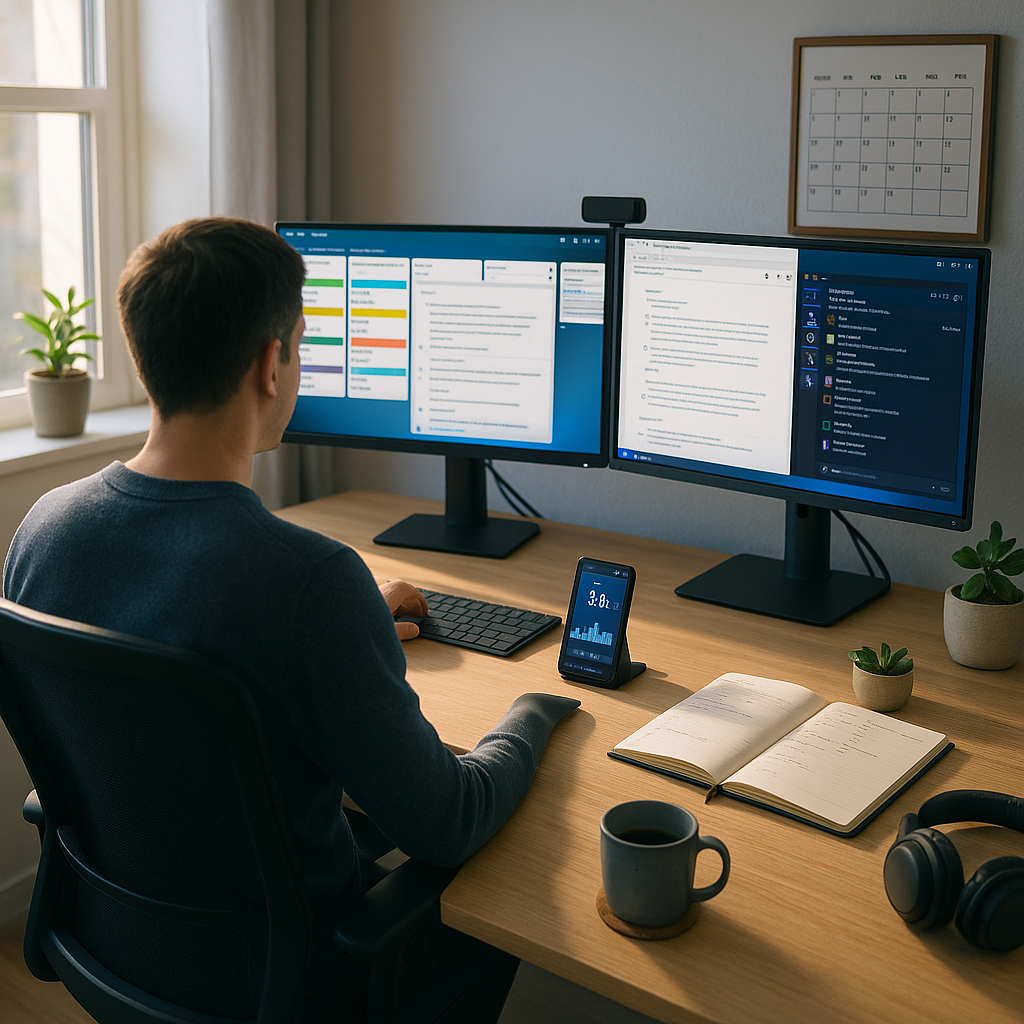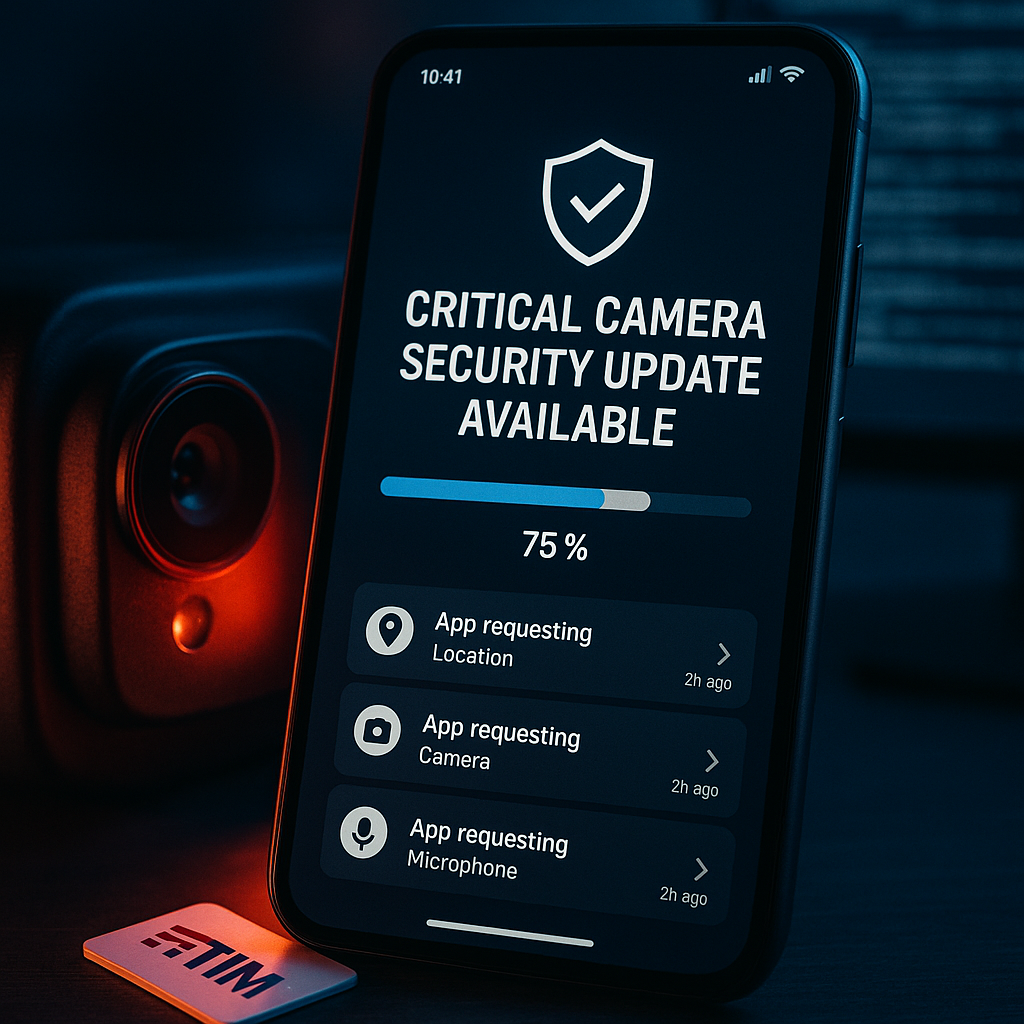Key Takeaways
- Routine-based app adoption supersedes generic “best-of” lists: Remote workers unlock greater productivity by customizing app usage to match their unique routines and working styles, rather than simply following trending recommendations or popular software categories.
- Mastering digital workspaces requires more than just picking tools: Creating an effective remote setup involves thoughtfully organizing apps to enable seamless transitions between communication, task management, and documentation. This minimizes context-switching, reduces mental fatigue, and maximizes focus.
- Transparent workflows drive authentic communication: Highly effective teams go beyond chat and video calls. They openly share project boards, notes, and calendars, ensuring expectations, progress, and next steps remain visible to every member each day.
- Personal discipline outshines app features in task management: Interviewed professionals consistently report that tools like Trello or Todoist deliver the most value when used alongside rituals such as morning prioritization or end-of-day reviews. This human element is key to staying accountable and consistent.
- Time tracking exposes hidden distractions and energy patterns: Utilizing apps like Toggl or RescueTime helps remote workers identify productivity peaks and pitfalls. These insights highlight how multitasking or home interruptions can silently undermine deep work.
- Cloud storage forms the backbone of secure, stress-free collaboration: Centralized and accessible storage solutions prevent version-control chaos and data loss, giving remote teams and freelancers peace of mind and creating smoother hand-offs.
- Integration challenges spark creativity and build resilience: Many remote professionals develop innovative workflows (combining platforms like Notion with Slack bots or setting up calendar automations) to fill the gaps left by single-purpose apps. This flexible mindset is key to overcoming integration hurdles.
- Authentic routines outperform productivity hype: The most valuable lesson from experienced remote workers is that true success comes from selecting a few reliable tools, building sustainable routines, and adapting technology to personal work rhythms instead of chasing every new, shiny app.
By listening to voices from the digital frontlines, you can discover not just which apps matter, but how to turn them into strategies that truly fit modern work lives. Let’s dive deeper into the routines and rituals that make certain tools stand out in everyday use.
Introduction
Not all remote work apps live up to their reputations. The real test lies in which tools consistently survive a demanding workday, not just which ones trend on tech blogs. From early-morning inbox rituals to late-night creative sprints, today’s most effective freelancers and remote teams don’t rely on “best” solutions. They depend on tools that genuinely complement their personal workflows.
Through candid insights from seasoned remote professionals, this guide reveals how productivity apps support daily routines, bridge collaboration gaps, and highlight potential stumbling blocks that rarely appear in polished marketing copy. Instead of adopting a one-size-fits-all approach, these real-world stories offer practical, customizable strategies to craft a remote work setup that is both productive and sustainable.
Let’s explore which remote work apps rise to the challenge, how experts actually use them in fast-paced environments, and what it truly takes to develop a digital routine that stands the test of time.
Un passo avanti. Sempre.
Unisciti al nostro canale Telegram per ricevere
aggiornamenti mirati, notizie selezionate e contenuti che fanno davvero la differenza.
Zero distrazioni, solo ciò che conta.
 Entra nel Canale
Entra nel Canale
How Real Remote Workers Choose Their Productivity Apps
When Sarah Martinez, a digital marketing consultant, began working remotely, she made the mistake of downloading every top-rated productivity app she could find. “I had notification chaos,” she recalls. “It took me months to realize that carefully picking tools tailored to my genuine workflow was far more valuable than amassing the ‘perfect’ app for every niche task.”
Remote professionals consistently highlight three essential criteria when selecting their productivity apps:
- Workflow Compatibility: The tool should naturally fit into existing routines and processes.
- Integration Capabilities: It must operate smoothly with other critical apps, minimizing friction across platforms.
- Learning Curve Versus Benefit: The time invested in setting up or learning the app should be justified by a clear boost in productivity or ease of use.
For example, James Chen, a product designer, advocates for a minimalist approach. “I use Notion for documentation and project management, Slack for communication, and Calendly for scheduling. That’s my core stack. Each tool serves multiple needs, which reduces the fatigue of app-jumping.”
Testing tools in real-world settings before committing is another common practice. Elena Kowalski, a remote team leader, shares, “I dedicate a full week to test each potential tool. If it doesn’t tangibly improve my workflow within that window, it’s not worth integrating.”
This approach isn’t exclusive to one field. In education, for instance, teachers often trial apps like Google Classroom or Seesaw with actual lesson plans before officially adopting them for student use. In healthcare administration, digital platforms for scheduling and telehealth are piloted with a small patient pool to ensure they align with both provider and patient routines.
Building an Effective Digital Workspace
The most successful remote workers excel at organizing their digital workspace into distinct functional zones. Technical writer Marcus Thompson outlines his system: “I separate my workflow into three spaces (communication hub (Slack), deep work zone (VS Code and Notion), and project tracking (Trello)). Each has its own browser window and dedicated engagement times.”
Common patterns in workspace organization include:
- Morning Dashboards: A personalized central view showing the day’s tasks, calendar events, and priority items.
- Communication Zones: Segregated spaces for client or team interaction using dedicated apps or browser instances.
- Focus Areas: Distraction-free environments, often set up with tools like Notion, Bear, or VS Code, to support deep work without interruptions.
- Resource Libraries: Well-structured repositories for knowledge, reference documents, and research (leveraging tools like Google Drive, Dropbox, or Evernote).
UX researcher Ana Patel provides a creative example: “I set up custom Chrome workspaces for each client. Each workspace has only the pinned tabs and bookmarks relevant to that client, helping me keep clear project boundaries and context.”
This approach translates well to many industries. For legal professionals, separating contract review tools (DocuSign or Clio) from research databases improves focus. In marketing, using distinct browser profiles for analytics, design assets, and client communication streamlines the workflow and reduces mishaps.
Essential Remote Work Productivity Apps in Daily Life
Communication and Collaboration Tools
Remote content strategist David Wu highlights the power of making digital communication feel natural. “Slack isn’t just for quick messages. We treat it as our team’s digital watercooler. Dedicated channels for celebrations, support requests, and Friday coffee breaks encourage organic interactions that would otherwise be lost in remote setups.”
Effective usage tips include:
- Setting “focus mode” blocks in your device or app status to communicate deep work times.
- Creating clear channel categories to prioritize urgent versus non-urgent communications.
- Leveraging threaded conversations to reduce message clutter and keep discussions organized.
- Integrating communication tools with project management platforms (Asana, Monday.com, or Jira) to automate status updates and task notifications.
In healthcare, platforms like Microsoft Teams and Zoom are integrated into electronic health records for seamless care coordination, while in education, Google Meet and ClassDojo simplify classroom collaboration.
Task and Project Management
Project manager Lisa Stephens stresses the importance of balance. “Rigid GTD systems in Todoist didn’t work for my remote teams. We needed some flexibility, so we ended up customizing a Kanban approach in Trello.”
Strategies for success include:
- Creating standardized templates for common projects to save setup time.
- Establishing clear task handoff rules for remote or asynchronous work.
- Using automation (such as Zapier or native app features) for recurring tasks and reminders.
- Including detailed context notes or linked resources to keep distributed work moving efficiently.
Similarly, in finance, teams might use Monday.com or Asana automation to manage monthly reporting cycles, ensuring tasks do not fall through the cracks during critical periods.
Time Management and Focus Tools
Freelance developer Rachel Kim shares her method: “I combine RescueTime for passive activity tracking with Forest for focused work sessions. The data helps me pinpoint when I’m most productive (and when distractions creep in), while the gamified approach keeps things fun and motivating.”
Un passo avanti. Sempre.
Unisciti al nostro canale Telegram per ricevere
aggiornamenti mirati, notizie selezionate e contenuti che fanno davvero la differenza.
Zero distrazioni, solo ciò che conta.
 Entra nel Canale
Entra nel Canale
Professionals in other fields also harness such insight. Legal researchers use Toggl to audit how much time is dedicated to client research versus administrative tasks. Educators employ Pomodoro timers and classroom management apps to ensure focused lesson planning.
Overcoming Productivity Pitfalls and Integration Hurdles
Despite their strengths, remote work tools come with unique challenges. Experienced remote professionals have honed a range of solutions:
-
Tool Fragmentation
Solution: Operations manager Tom Bradley shares, “I use Zapier to automate key steps between my main apps. When a client books through Calendly, it auto-creates a Notion page and triggers a Slack update for the team.” This type of automation is vital not only in tech but also in HR, where integrating applicant tracking systems with onboarding tools reduces manual effort and errors. -
Notification Overload
Strategy: Content creator Maya Patel recommends batching notifications. “Morning for planning, midday for progress checks, and end-of-day for closure. The rest of the time, notifications are silenced.” This strategy can be equally effective for healthcare administrators who need to remain focused during appointments but responsive during open scheduling windows. -
Context Switching
Approach: Software developer Chris Martinez relies on time-blocking. “I dedicate set hours to specific tools and workflow types, which significantly cuts down on the mental drag of jumping between tasks.” This approach is widely adopted in education (scheduling grading and lesson planning separately) and in marketing (allocating blocks for analytics reviews versus creative brainstorming).
Lessons from the Digital Trenches
Veteran remote workers agree that embracing sustainable practices is more effective than chasing productivity hacks. Team lead Jennifer Wong offers this guidance:
- Regular App Audits: Review and refine your digital toolkit every quarter to eliminate redundancies. See how an app audit approach helps teams focus only on tools that truly deliver value.
- Integration as a Priority: Choose tech that meshes well with your main platforms, making collaboration smoother and manual handoffs unnecessary.
- Mindful Adoption: Introduce new tools only when they solve a specific, recurring pain point. Avoid app overload.
- Team Alignment: Ensure every tool supports the collective workflow and project goals, not just individual preferences.
Industry-wide, this philosophy proves invaluable. In finance, legal, and healthcare, streamlined tech adoption ensures privacy, compliance, and efficiency. In education and marketing, it fosters consistency and reduces burnout.
Ultimately, successful remote productivity does not come from having the most apps, but from adopting a streamlined, integrated set of tools that enable meaningful routines and empower both individuals and teams to thrive.
Conclusion
The experiences of real remote professionals make it clear: Productivity is not about chasing the newest apps, but about curating a toolkit that truly suits your workflow, minimizes unnecessary friction, and nurtures effective collaboration. By focusing on seamless integration, silencing pointless distractions, and conducting regular tool audits, remote workers construct a digital environment that supports focused work, creativity, and teamwork. No need for overwhelm.
As the landscape of remote work continues to evolve across industries (from tech and marketing to healthcare, education, and finance), one fact stands out. The best productivity apps are those that quietly empower your rhythm rather than disrupt it. Whether you are starting from scratch or looking to refine an existing system, intentional choices and mindful digital routines are your strongest allies.
Looking forward, professionals and teams that adopt flexible, user-driven strategies will not just keep up—they will set the pace. By anticipating change and leveraging integrated, thoughtfully chosen solutions, the future of remote work promises greater autonomy, well-being, and sustainable productivity for all. The challenge now is not simply in adopting new tools, but in making each tool work for you. Create a digital workspace where technology enhances your unique way of working, every single day.





Leave a Reply